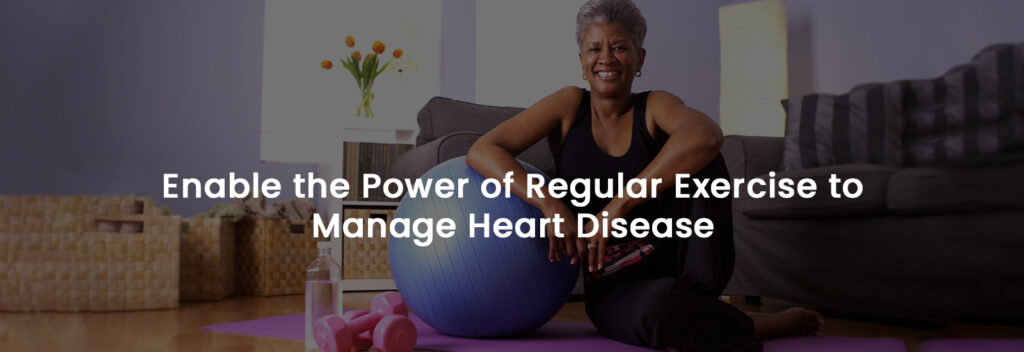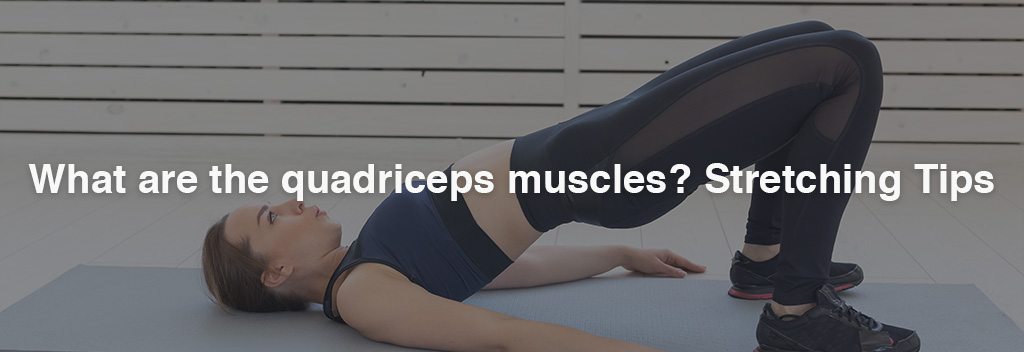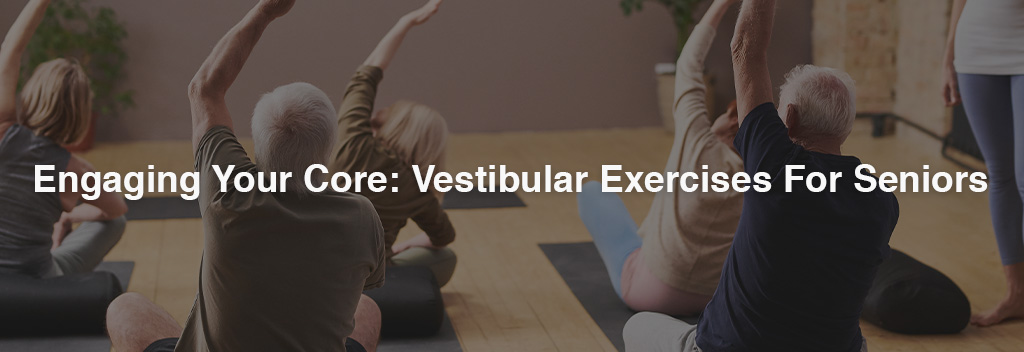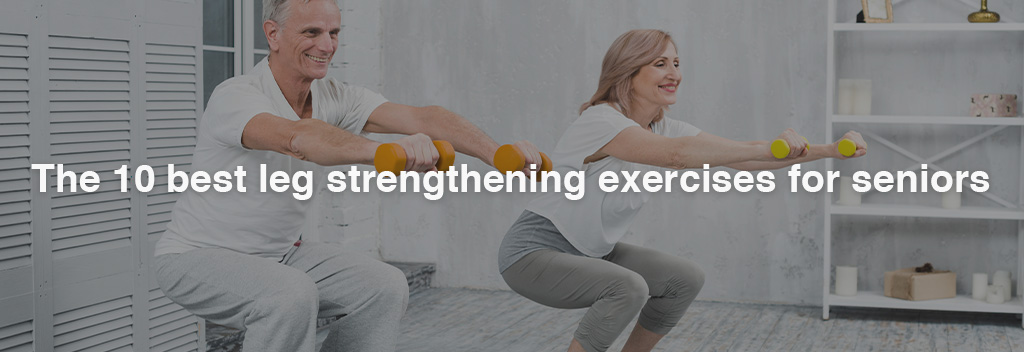
Heart disease is a prevalent concern among seniors, requiring specific attention. However, being diagnosed with heart disease doesn’t mean seniors should avoid physical activity altogether. There are common misconceptions that exercise is unsafe or ineffective for seniors with heart disease. In fact, regular exercise is crucial in managing heart issues and promoting overall health in seniors.
By adopting an active lifestyle with a balanced diet under medical supervision seniors can enjoy improved heart health, enhanced overall well-being, and a higher quality of life.
Types of Heart Diseases and Their Impact on Daily Life
1. Coronary artery disease (CAD)
This is the most prevalent type of heart disease in seniors. CAD occurs when the arteries that supply blood to the heart become narrow or blocked due to plaque buildup. It can lead to chest pain (angina), shortness of breath, and reduced ability to engage in physical activities.
2. Heart failure
Heart failure occurs when the heart’s ability to pump blood efficiently is compromised. Seniors with heart failure may experience fatigue, shortness of breath, leg swelling, and difficulty performing daily activities. However, with appropriate medical management, lifestyle modifications, and exercise, seniors can improve their heart health and maintain a fulfilling life.
3. Arrhythmias
Seniors may develop irregular heart rhythms, known as arrhythmias, that can disrupt the normal functioning of the heart. Arrhythmias can lead to palpitations, dizziness, fainting, and reduced tolerance for physical exertion.
4. Valvular heart disease
Valvular heart disease involves damage or dysfunction of the heart valves, impairing blood flow through the heart. Seniors with valvular heart disease may experience fatigue, shortness of breath, chest pain and limited exercise capacity.
Preventive care plays a crucial role in managing heart disease. Regular check-ups and consultations with healthcare professionals at a trusted medical clinic can provide seniors with personalized guidance, early detection of potential issues, and effective strategies to manage their condition.
The Role of Exercise in Senior Health
Regular physical activity is paramount for seniors as it contributes significantly to their health and well-being. Exercise offers numerous benefits that promote longevity, maintain physical function, and improve quality of life.
Specific Benefits of Exercise for Heart Health
- Strengthens heart muscle, improves cardiovascular function, and enhances circulation.
- Reduces the risk of further complications by managing blood pressure, cholesterol, and blood sugar levels.
- Maintains healthy weight to reduce the strain on the heart and improve overall health.
- Promotes the growth of collateral blood vessels, which can provide alternative routes for blood flow and alleviate symptoms of heart disease.
- Improves energy levels, reduces fatigue, enhances mood, and increases the overall quality of life.
Some Low-Impact Exercises Suitable for Seniors with Heart Disease
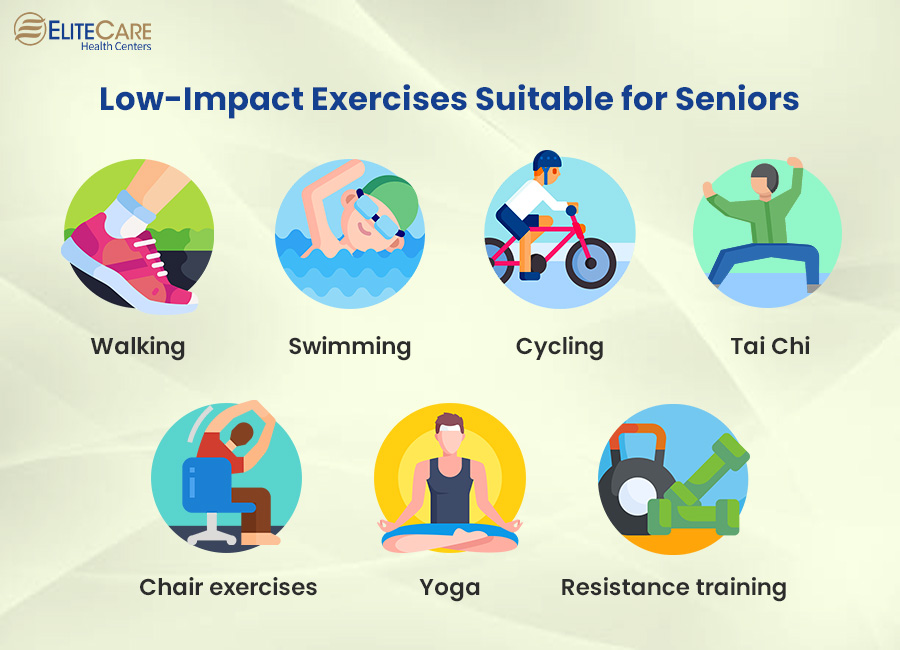
Walking
A low-impact exercise that can be easily incorporated into daily routines. Start with shorter durations and gradually increase the distance and pace over time. Walking improves cardiovascular fitness and can be adjusted based on individual abilities and stamina
Swimming or water aerobics
These exercises are gentle on the joints and provide resistance for muscle strengthening and cardiovascular benefits.
Cycling
Stationary bikes or outdoor cycling on flat terrain can be excellent low-impact exercises for seniors to improve heart health and leg strength.
Tai Chi or Yoga
These practices combine gentle movements, deep breathing, and meditation. It helps improve balance, flexibility, and relaxation while promoting heart health.
Chair exercises
Seniors with limited mobility can engage in chair-based exercises focusing on stretching, strength training, and gentle cardio movements.
Resistance training with light weights or resistance bands
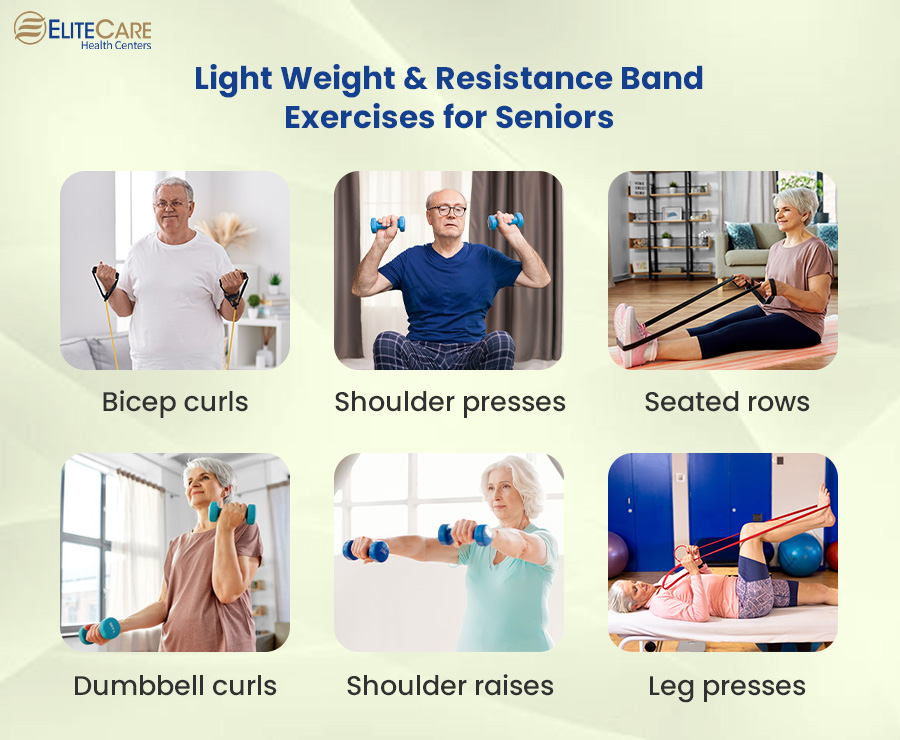
Seniors can benefit from strengthening exercises that target major muscle groups to promote heart health and minimize strain on the cardiovascular system. When using resistance bands, exercises like bicep curls, shoulder presses, or seated rows can be performed by securely anchoring the band and gradually increasing resistance. Incorporating light weights allows for exercises such as dumbbell curls, shoulder raises, and leg presses. It is important to start with lighter weights or resistance and gradually progress as strength improves. To ensure proper technique and safety during resistance training sessions, it is advisable to work with a qualified fitness professional or seek supervision from a senior care service provider.
Practical Ways to Starting and Maintaining an Exercise Routine
Get medical clearance
Before beginning any exercise program, seniors should consult their primary care physician or healthcare professional. They can provide valuable insights into the individual’s specific health condition, recommend appropriate exercises, and address any concerns or limitations
Start slowly and progress gradually
Begin with low-intensity exercises and gradually increase duration and intensity over time to avoid overexertion.
Set realistic goals
Seniors should set achievable goals that focus on progress rather than perfection. These goals can include increasing the number of steps taken per day, completing a certain number of exercise sessions per week, or gradually increasing the duration of exercise sessions. Keeping track of steps walked using a pedometer or a fitness tracker can help monitor progress and provide motivation to reach daily activity targets.
Choose enjoyable activities
Engaging in enjoyable activities increases the likelihood of sticking to the exercise routine. Whether it’s walking, dancing, swimming, or participating in group exercise classes, finding activities that bring joy can make exercising a more pleasurable experience.
Incorporate variety
Varying the types of exercises can prevent boredom and engage different muscle groups. Encourage a combination of aerobic exercises, strength training, and flexibility exercises to target different aspects of fitness.
Listen to the body
Seniors should pay attention to their body’s signals and adjust the intensity or type of exercise accordingly. Rest when needed and avoid pushing beyond personal limits.
Stay hydrated and fuel the body
Drink plenty of water before, during, and after exercise to stay hydrated. Additionally, fuel the body with nutritious meals and snacks that support energy needs and overall health.
Incorporating Exercise into Daily Life
Regular physical activity becomes more attainable when integrated into seniors’ daily routines. By making exercise a habit and incorporating enjoyable activities, seniors can increase their adherence and overall engagement in physical activity. Additionally, social engagement and group activities can provide motivation and enhance the overall exercise experience.
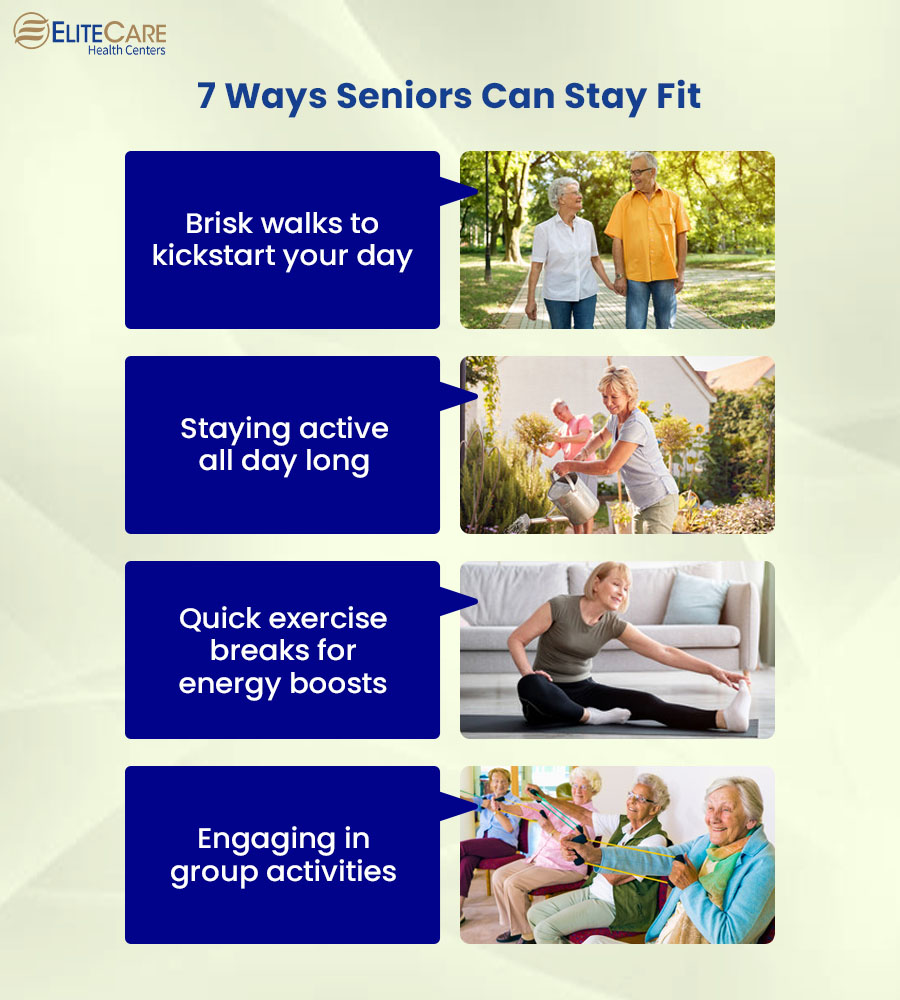
1. Morning or evening walks: Start or end the day with a brisk walk. Walking is a low-impact exercise that can be easily incorporated into daily routines. Invite a friend or family member to join you for added motivation and social interaction.
2. Incorporate everyday activities: Look for opportunities to be active throughout the day. Take the stairs instead of the elevator, walk or bike for short errands, or engage in household chores that involve movement.
3. Exercise breaks: Take short exercise breaks throughout the day. Set a timer to remind yourself to get up and move every hour. Stretch, perform simple exercises, or take a short walk to break up prolonged periods of sitting.
4. Engage in group activities: Join group exercise classes or programs designed for seniors. These activities provide social engagement, support, and motivation. Look for classes at local community centers or fitness clubs, or inquire at our healthcare clinic for recommendations.
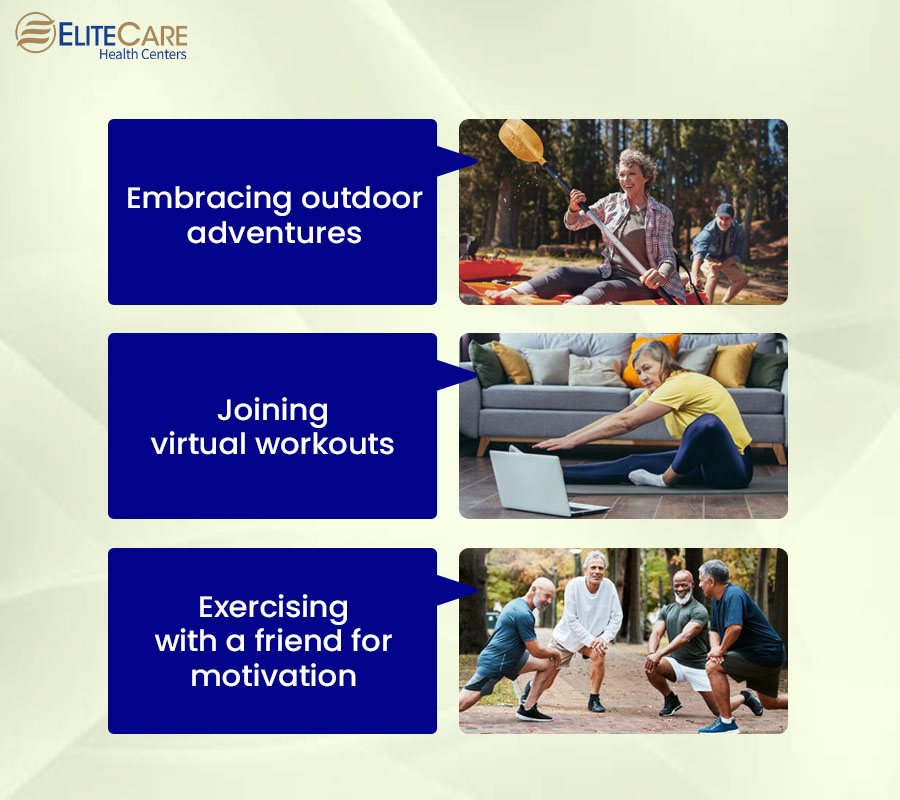
5. Explore outdoor activities: Engage in outdoor activities that promote heart health, such as cycling, swimming, hiking, or gardening. These activities provide physical exercise and expose oneself to fresh air and natural surroundings.
6. Participate in virtual workouts: Use online resources and virtual workout classes. Many fitness platforms offer exercise programs designed specifically for seniors. Participate in virtual workouts from your home, guided by professional instructors.
7. Stay motivated with social engagement: Exercising with a friend or joining an exercise group where seniors can connect with others who have similar fitness goals can provide encouragement, support, and accountability.
The Bottom Line
Preventive care plays a vital role in supporting seniors with chronic conditions. With our dedicated primary care physicians and comprehensive senior care services, EliteCare Health Center can provide valuable assistance. Seniors can benefit from regular check-ups, annual physical exams, and routine physical exams at our trusted healthcare clinics. These visits allow for personalized guidance, ongoing health monitoring, and the opportunity to address any concerns or adjustments needed in their exercise and lifestyle plans.
Only you have the power to take control of your health. Embrace regular exercise, seek preventive care and partner with a trusted primary care physician or health care center like EliteCare Health Centers. Let’s prioritize our heart health and make the most of every day.


